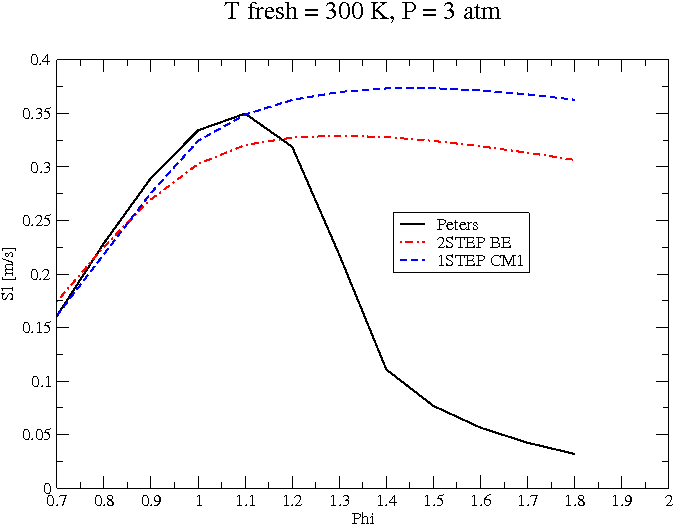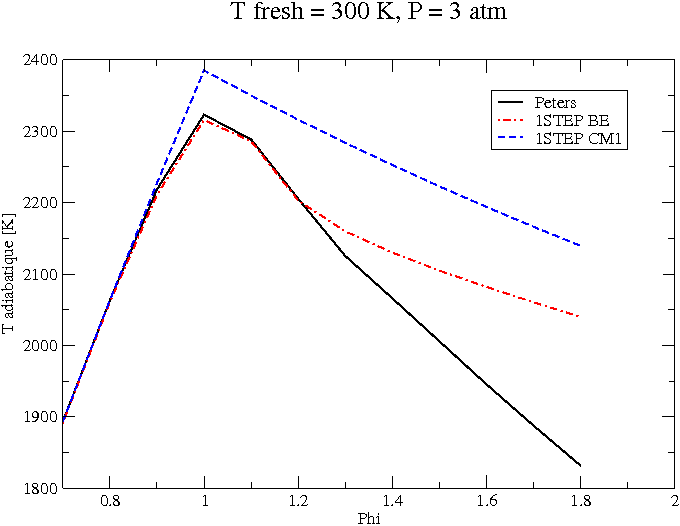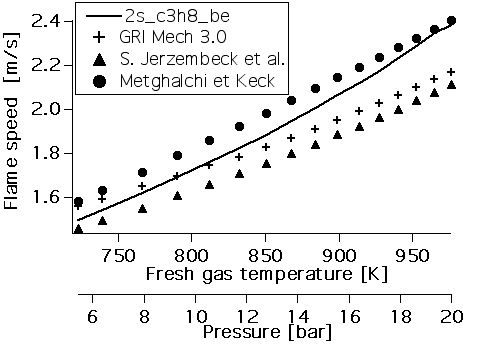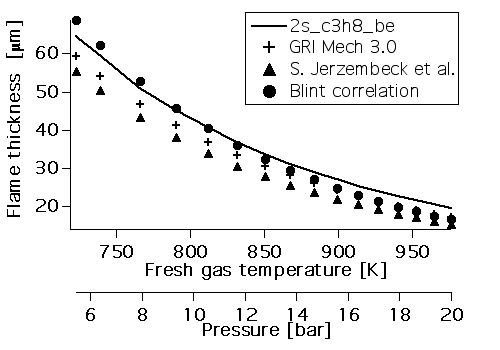Navigation
Propane/air combustion
Several mechanisms are presented in this section, sorted out in decending order of complexity :
- Detailed mechanisms :
- Analytically reduced mechanisms :
- Global mechanisms :
You can find the datas provided on this page on the online database
Please, note that unless explicitly specified, the output files provided in this website are a mean of comparison and are not necessarily formatted to be used as a restart file for cantera/can2av/...
Detailed mechanisms
A mechanism developed by Peters
This detailed mechanism for propane-air combustion, contains 31 species and 107 reaction.
- 1D freely-propagating premixed flame
Here are the data files (.csv) for different conditions :


Analytically reduced mechanisms
What differs with those type of mechanisms is that the source term of each species that remain is not expressed anymore as a combination of elementary reaction rates; but rather as a complex relation involving the detailed mechanism's reaction rates as well as the concentration of species that may not be amongst the reduced species set. Those mechanisms are characterized by the retained species, and are not associated with a "real" set of reactions, so that they require a special subroutine to override the classical evaluation of the species' source terms.
A 22 transported species mechanism (derived with YARC by Félix Collin)
This mechanism involves 22 species. The .cti file is available here. The routine for computation of the kinetics, along with the files to use the AVBP transport model in a CANTERA computation can be found on this file. Note that this mechanism is already implemented in the latest AVBP releases !
- 1D freely-propagating premixed flame
A data file is provided below, which can be used as an initial guess for the can2av tool :
Global mechanisms
An outdated 1 global step mechanism (1STEP CM1)
As the name suggests, only one reaction is used in this mechanism, involving 5 species. The .cti file is available here.
- 1D freely-propagating premixed flame
Here are the data files (.csv) for different conditions :
If the AVBP transport model is to be used, the following input files are required :
A 2 steps mechanism (2STEPS BE)
This mechanism contains 2 reactions and involves 6 species. The .cti file is available here. This mechanism is valid for stoichiometric combustion, T ranging from 700K to 1000K, P ranging from 5 bars to 20 bars and EGR dilution rate up to 10 % (in mass).
Here are the data files (.csv) for different conditions :
If the AVBP transport model is to be used, the following input files are required :
Below are plotted the laminar flame speed, the burnt gas temperature and the laminar flame thickness for an isentropic compression :



References:
- R. J. Blint. The relationship of the laminar flame width to flame speed. Combust. Sci. Tech. 49 (1986) 79-92.
- M. Metghalchi and J. Keck. Laminar burning velocity of propane-air mixtures at high temperature and pressure. Combust. Flame 38 (1980) 143-154.
- S. Jerzembeck, N. Peters, P. Pepiot-Desjardins and H. Pitsch. Laminar burning velocities at high pressure for primary reference fuels and gasoline: Experimental and numerical investigation. Combust. Flame, 156(2) (2009) 292-301. (/home/cfd2/avbp/CHEMISTRY/C3H8_JERZEMBECK)